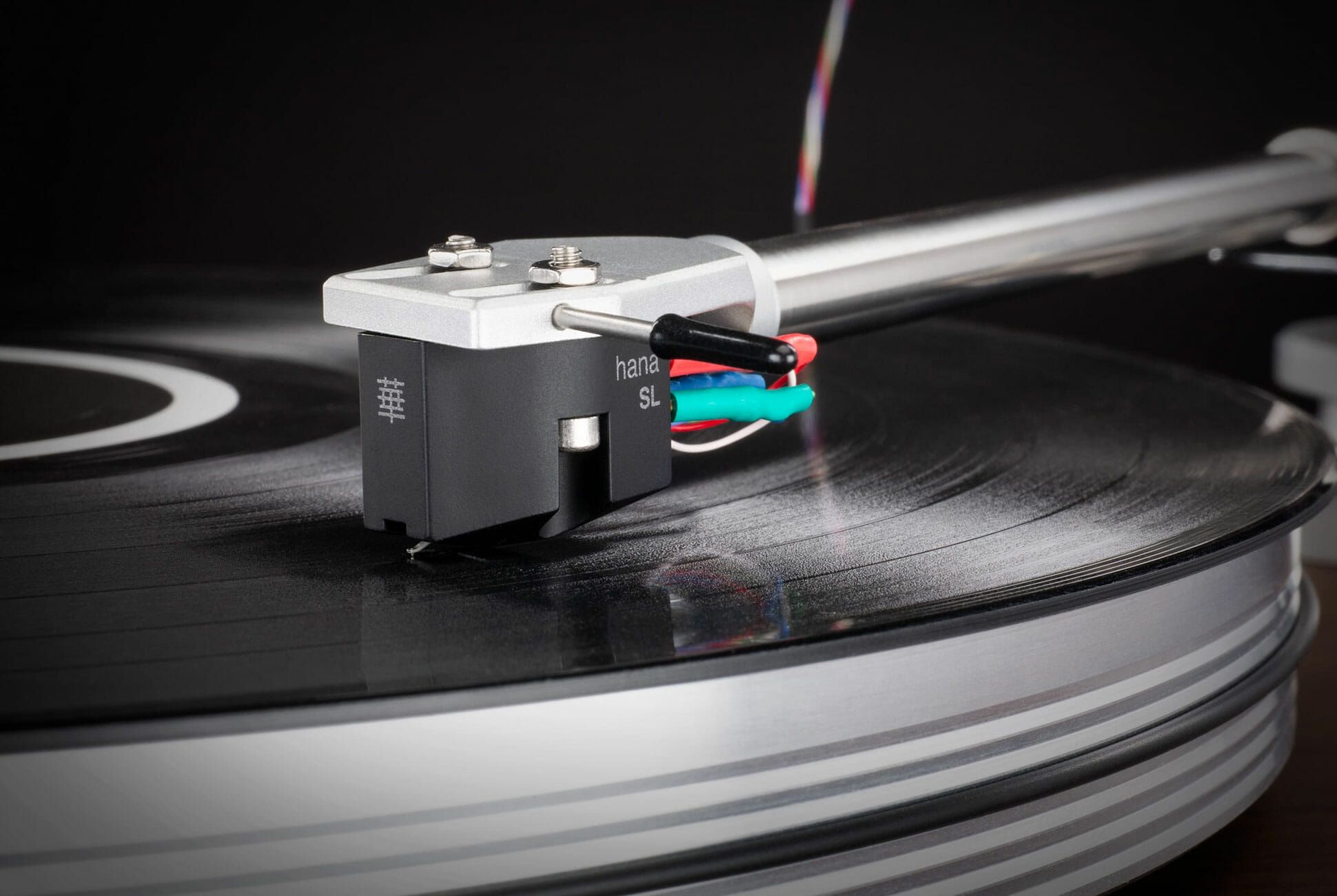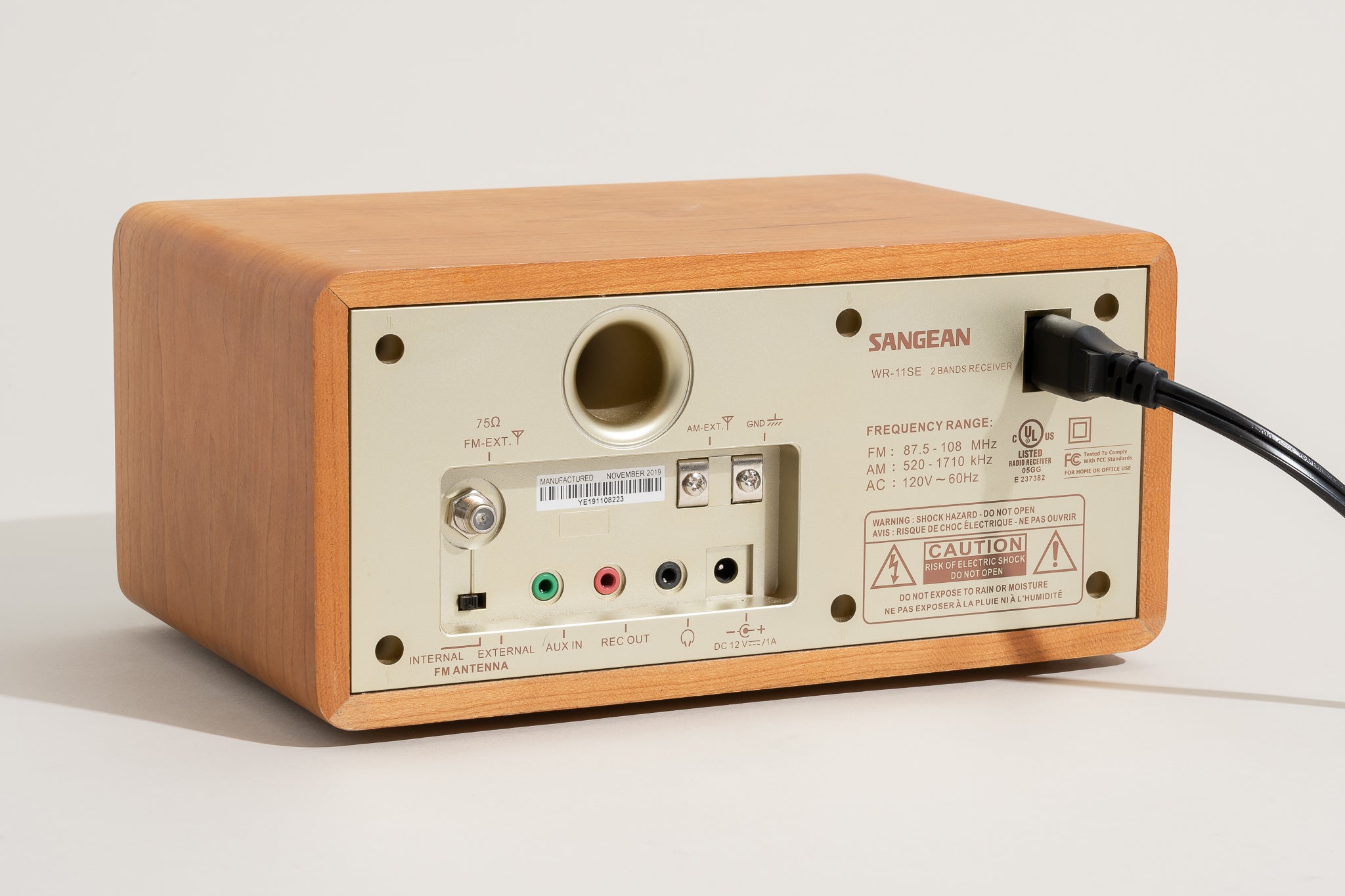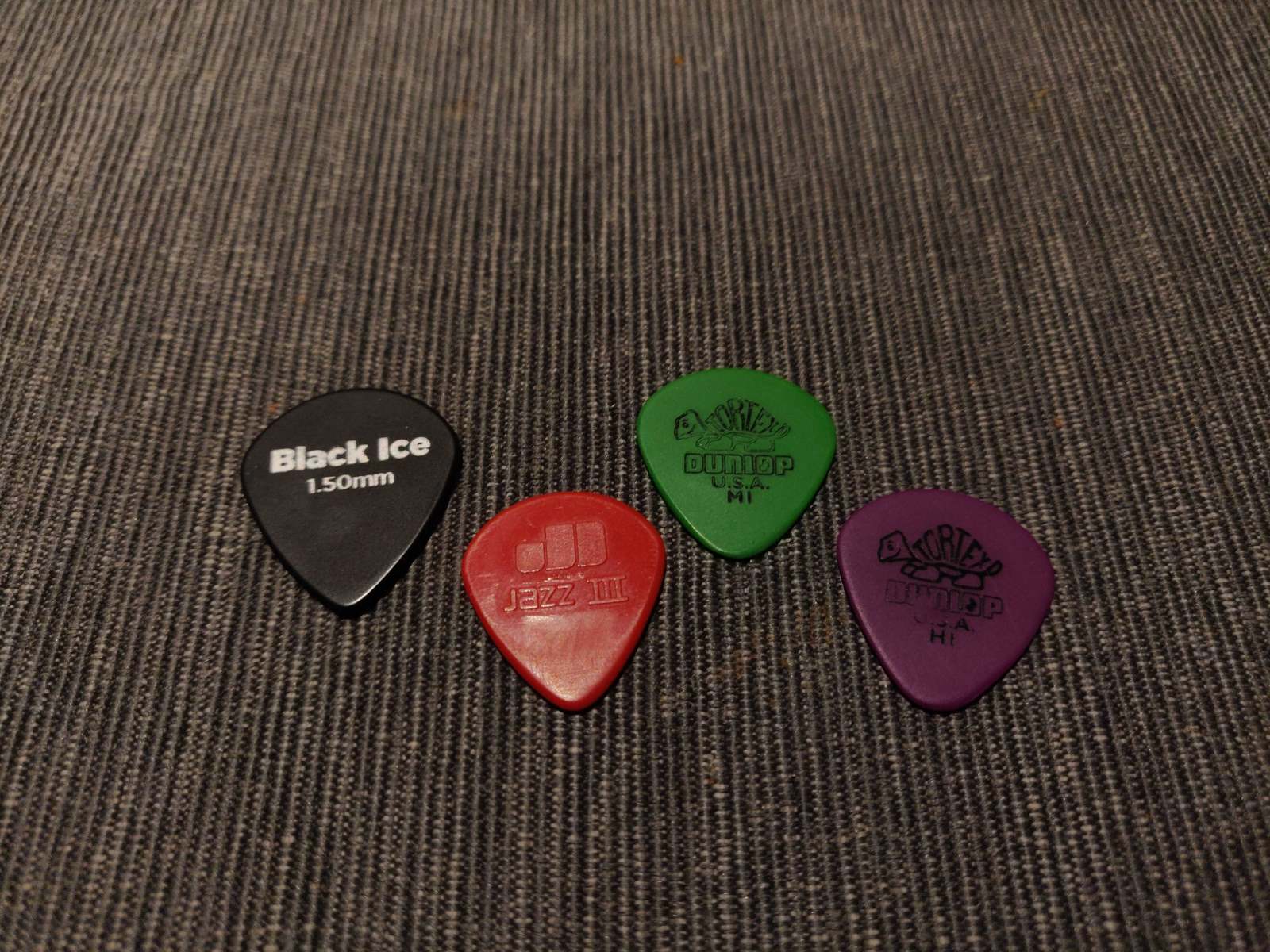Home>Devices & Equipment>Turntable>Why Are Turntable Cartridges So Expensive


Turntable
Why Are Turntable Cartridges So Expensive
Modified: January 22, 2024
Discover the reasons behind the high cost of turntable cartridges. Explore the intricate technology and craftsmanship that makes them essential for a premier audio experience.
(Many of the links in this article redirect to a specific reviewed product. Your purchase of these products through affiliate links helps to generate commission for AudioLover.com, at no extra cost. Learn more)
Table of Contents
Introduction
A turntable cartridge is an essential component of a vinyl record player, responsible for translating the grooves on a record into an audio signal that can be amplified and heard through speakers. While turntables have gained popularity in recent years, you may find yourself wondering why turntable cartridges are often priced so high. In this article, we will explore the various factors that contribute to the cost of turntable cartridges and shed light on the intricacies and craftsmanship involved in their production.
Turntable cartridges are not just a piece of plastic with a needle; they are precision instruments that require meticulous engineering and craftsmanship. They are built with the aim of capturing every detail and nuance in the music on the record, providing a high-quality audio experience for vinyl enthusiasts. The complexity involved in designing and manufacturing these cartridges directly impacts their price.
As we dive deeper into the factors that influence the cost of turntable cartridges, we will explore the manufacturing processes and materials used, the research and development efforts, quality assurance and testing, market demand and limited production, as well as the influence of brand reputation.
So, let’s embark on a journey to uncover the reasons behind the seemingly high price tags of these essential components in the world of vinyl music.
The Importance of a Turntable Cartridge
A turntable cartridge plays a critical role in preserving the integrity and quality of the music stored on vinyl records. It acts as the bridge between the grooves on the record and the audio equipment that amplifies and produces sound. Without a high-quality cartridge, the audio signal may be distorted, resulting in a subpar listening experience.
Turntable cartridges are responsible for translating the physical grooves on a vinyl record into an electrical signal. The cartridge’s stylus, also known as a needle, traces the grooves on the record and picks up the vibrations caused by the variations in the groove depth and width. These vibrations are then converted into an electrical signal that can be amplified by the phono preamp and sent to speakers.
Due to the delicate nature of the process, the precision and accuracy of the cartridge are crucial. A well-designed cartridge can faithfully reproduce the intricate details, dynamics, and nuances of the music. On the other hand, a subpar cartridge can introduce distortions and inaccuracies, resulting in a loss of fidelity and reduced audio quality.
Moreover, a high-quality turntable cartridge can also help to minimize wear and tear on both the record and the stylus. The shape, composition, and alignment of the stylus tip can have a significant impact on the longevity of both the cartridge and the vinyl record. A poorly designed cartridge may exert excessive pressure on the grooves, causing them to wear out more quickly and potentially damaging the delicate surface of the record.
In the world of vinyl enthusiasts, audiophiles, and music lovers, the importance of a high-quality turntable cartridge cannot be overstated. It is the gateway to experiencing the true essence of vinyl audio reproduction, capturing the warmth, richness, and authenticity that makes vinyl records so beloved.
Now that we understand the significance of a turntable cartridge, let’s delve into the factors that contribute to the relatively high prices associated with these essential components.
The Complexity of Turntable Cartridges
Turntable cartridges may appear simple at first glance, but they are intricate and highly sophisticated devices that require expert engineering and precise craftsmanship. The complexity lies in the design and construction of the cartridge, as well as the integration of various components that work together to produce high-quality sound.
One of the primary complexities of turntable cartridges is the stylus, or needle. The stylus is responsible for physically tracing the grooves on the record, and its design is crucial for accuracy and durability. Cartridges can have different types of styli, such as spherical, elliptical, or even advanced line contact and microline profiles. The manufacturing process for these styli requires precision machinery and the use of high-quality materials.
In addition to the stylus, the cartridge body itself is a complex component. It needs to be designed to minimize vibrations and resonances that can affect sound quality. Cartridge bodies are typically made from various materials, ranging from lightweight plastics to more exotic materials like aluminum, titanium, or even wood. The selection of materials directly impacts the overall performance and cost of the cartridge.
The coils and magnets inside the cartridge are another intricate part of its design. These components work together to generate the electrical signal that is sent to the phono preamp. The construction of these components requires precision winding of ultra-fine wire and the careful placement of magnets to ensure accurate signal reproduction.
Moreover, the cartridge must be finely balanced and aligned to ensure optimal tracking of the stylus along the record grooves. Achieving proper alignment requires expertise and careful adjustment of parameters such as offset angle, overhang, and tracking force. Precision tools and skilled labor are necessary to achieve the desired alignment, contributing to the complexity and cost of turntable cartridges.
Overall, the complexity of turntable cartridges lies in the integration and synchronization of various elements, from the stylus and cartridge body to the coils and magnets. Advancements in design and technology continue to push the boundaries of what is possible in terms of sound quality, but with that comes an increase in complexity and, subsequently, higher production costs.
Now that we understand the intricacies involved in the manufacturing of turntable cartridges, let’s explore the impact of these complexities on their pricing.
Manufacturing Processes and Materials Used
The manufacturing processes and materials used in the production of turntable cartridges also contribute to their cost. To achieve high-quality sound reproduction, precision engineering and the use of premium materials are essential.
Firstly, let’s consider the manufacturing processes involved in creating a turntable cartridge. These processes include precision molding, machining, and assembly. The cartridge body, which houses the stylus and the internal components, is typically manufactured using injection molding or CNC machining. These processes require specialized machinery and skilled operators to ensure precise dimensions and accurate construction.
In terms of materials, the choice of components greatly impacts both the sound quality and the price of the cartridge. The stylus, for example, can be made from a variety of materials such as diamond, ruby, or even boron. Each material has its own sonic characteristics and durability, with diamond being the most commonly used due to its excellent wear resistance and exceptional sound reproduction capabilities.
The body of the cartridge can be made from various materials as well. While some entry-level cartridges may use lightweight plastics, higher-end models often incorporate more premium materials like aluminum or titanium. These materials offer better rigidity, dampening of vibrations, and overall sonic performance. However, they also come with a higher price tag due to the increased costs of manufacturing and material sourcing.
Additionally, the coils and magnets within the cartridge are critical components that contribute to its performance. The coils are typically made using ultra-fine wire and require meticulous winding to ensure precise impedance and sensitivity. The magnets may be composed of materials such as neodymium for enhanced magnetic strength and efficiency. These components must be carefully selected and integrated to achieve optimal sound quality, adding to the overall manufacturing complexity and cost.
Furthermore, the assembly process plays a crucial role in the final product. Skilled technicians are required to delicately align the stylus, ensure proper tension on the suspension system, and calibrate the electrical components. Each cartridge must undergo rigorous quality control and testing to meet specific performance criteria and ensure consistency across the product line.
Considering the advanced manufacturing processes and the use of premium materials, it is evident that the production costs associated with turntable cartridges can be substantial. These factors, along with the complexity discussed earlier, contribute to the higher price tags often seen in the market.
Next, let’s examine the research and development costs that further impact the pricing of turntable cartridges.
Research and Development Costs
Research and development (R&D) is a crucial aspect of the turntable cartridge industry, and the costs associated with R&D significantly contribute to the pricing of these components. Cartridge manufacturers invest significant resources in developing new technologies, improving existing designs, and pushing the boundaries of sound reproduction.
To create innovative and high-performance cartridges, manufacturers dedicate considerable time and money to research and experimentation. They employ teams of engineers, acousticians, and material specialists who work tirelessly to optimize cartridge design, reduce internal resonance, improve tracking ability, and enhance overall sound quality.
The R&D process involves the design and testing of prototypes, as well as thorough performance evaluations. Cartridge manufacturers conduct extensive listening tests, frequency response measurements, and tracking force experiments to ensure that their products meet the highest standards of audio fidelity.
Furthermore, as technology evolves and new materials become available, cartridge manufacturers must adapt and incorporate these advancements into their products. They invest in developing and evaluating novel materials, such as advanced composites or new magnet configurations, to achieve improvements in sound quality and longevity.
It is important to note that not all R&D efforts result in successful innovations or marketable products. Manufacturers often encounter setbacks, failures, and unexpected challenges during the research phase, which further add to the costs. However, these investments in R&D are essential for driving the industry forward, pushing boundaries, and delivering improvements in turntable cartridge performance.
The research and development costs incurred by manufacturers are eventually reflected in the pricing of turntable cartridges. Customers who desire cutting-edge technology, innovative features, and superior sound reproduction are willing to pay a premium for cartridges that embody the latest advancements in the field.
With a thorough understanding of the research and development costs associated with turntable cartridges, let’s explore the next factor that contributes to their pricing: quality assurance and testing.
Quality Assurance and Testing
Ensuring the quality and performance of turntable cartridges requires rigorous quality assurance (QA) and testing procedures. Manufacturers invest significant resources in these processes to deliver reliable and consistent products to their customers.
Quality assurance begins at the initial stages of manufacturing, where strict quality control measures are implemented to ensure the components and materials used meet specific standards. Each component, from the stylus to the cartridge body, undergoes meticulous inspection to verify its integrity and adherence to design specifications.
The assembly process is equally important, as any misalignment or error can adversely affect the performance of the cartridge. Technicians carefully and skillfully assemble each cartridge, paying close attention to the proper alignment of the stylus, the tension of the suspension system, and the calibration of the electrical components. This attention to detail ensures optimal tracking ability and accurate signal reproduction.
Once assembled, completed cartridges undergo thorough testing procedures to validate their performance. This testing may include a wide range of parameters, such as frequency response, channel separation, distortion levels, and tracking ability. Listening tests, conducted by trained ears, play a crucial role in evaluating the sound quality and overall sonic performance of the cartridges.
To ensure consistency and reliability, manufacturers also perform endurance testing to simulate real-world usage and assess the durability of the cartridges. This testing often involves subjecting the cartridges to intense tracking forces, repeated stylus movements, and exposure to various environmental conditions. By subjecting the cartridges to extreme conditions, manufacturers can identify potential weaknesses, make improvements, and ensure their products can withstand the demands of vinyl playback.
The extensive quality assurance and testing processes contribute to the overall cost of turntable cartridges. The investment in skilled labor, specialized testing equipment, and the time and effort required to validate the performance and durability of each cartridge all factor into the final price.
By adhering to strict quality control measures and conducting thorough testing, manufacturers aim to provide customers with a reliable and consistent product that meets the highest standards of performance. Now, let’s explore the impact of market demand and limited production on the pricing of turntable cartridges.
Market Demand and Limited Production
Market demand and limited production play a significant role in the pricing of turntable cartridges. The niche nature of the vinyl industry, coupled with the specific requirements of high-quality cartridges, creates a market where supply and demand dynamics influence pricing.
Turntable cartridges cater to a niche market of vinyl enthusiasts, audiophiles, and music lovers who appreciate the unique sound and experience of vinyl records. While vinyl has experienced a resurgence in popularity in recent years, it still represents a relatively small portion of the overall music market, making it a niche segment.
The limited market demand for turntable cartridges translates to lower production volumes compared to other audio components. Manufacturers must carefully balance their production quantities to meet the demand without incurring excessive overhead costs. This limited production scale contributes to the higher prices of turntable cartridges, as economies of scale cannot be fully realized.
Additionally, the production of high-quality cartridges requires meticulous attention to detail, handcrafted precision, and the use of premium materials. These factors can further limit production capacity. Skilled technicians and engineers need to dedicate time and effort to ensure the quality and performance of each cartridge, resulting in a smaller daily production output compared to mass-produced electronics.
Moreover, the rarity of certain materials used in turntable cartridges, such as rare earth magnets or specialized alloys, can also contribute to limited production. Manufacturers may face challenges in sourcing these materials in sufficient quantities, leading to higher costs for acquiring them, and subsequently impacting the pricing structure of the cartridges.
Lastly, the reputation and brand recognition of manufacturers can also influence demand and pricing. Established brands with a long-standing history of producing high-quality cartridges often command a premium price due to their reputation. Customers recognize their expertise and are willing to pay more for a product that they trust to deliver exceptional performance and durability.
As the vinyl market continues to evolve and grow, the demand for turntable cartridges may increase. However, until it reaches a level that allows for significant economies of scale, the limited production capabilities and niche nature of the industry will continue to influence the pricing of these essential components.
With a grasp of the market dynamics, let’s conclude our exploration of the factors contributing to the cost of turntable cartridges.
Brand Reputation and Premium Pricing
Brand reputation plays a crucial role in the pricing of turntable cartridges. Established brands with a strong reputation for producing exceptional audio equipment often command a premium price for their cartridges.
Companies that have been in the industry for a long time and consistently deliver high-quality products have cultivated a reputation for excellence. Customers are willing to pay a premium for the assurance of quality, craftsmanship, and superior sound reproduction associated with these reputable brands.
Well-known brands have invested significant time, effort, and resources in research and development, as well as in building and refining their manufacturing processes. This investment in expertise and innovation contributes to their reputation and validates their premium pricing.
Established brands often have a loyal customer base who have had positive experiences with their products in the past. Customers trust the brand’s track record and associate it with reliability and quality. This trust and brand loyalty give manufacturers the ability to set higher prices, knowing that customers are willing to invest in their products due to the brand’s reputation.
Furthermore, reputable brands usually have extensive customer support and after-sales service networks. They offer warranties and guarantees to back their products, providing customers with peace of mind and confidence in their investment. The additional value associated with reputable brands, including customer service and support, justifies the higher price tag for many buyers.
It is important to note that while reputable brands may command premium pricing, this does not necessarily mean that their cartridges are inherently better than others on the market. Innovation and advancements can occur across brands, and there are many excellent cartridges available from lesser-known manufacturers at more affordable price points.
Ultimately, brand reputation can contribute to the pricing of turntable cartridges. Established brands with a proven track record and loyal customer base can justify the higher price tag based on their reputation for quality, performance, and customer support.
With an understanding of the influence of brand reputation and the various factors contributing to the pricing of turntable cartridges, let’s conclude our exploration.
Conclusion
Turntable cartridges may seem expensive, but their price is justified by the intricate design, engineering, and craftsmanship involved. These essential components play a critical role in preserving the integrity and quality of the music stored on vinyl records.
The complexity of turntable cartridges lies in their design, construction, and integration of various components. The manufacturing processes and materials used, such as precision molding and the selection of premium materials like diamond, aluminum, or titanium, contribute to their cost.
Research and development efforts drive innovation and improvements in turntable cartridge technology, adding to their pricing. Quality assurance and rigorous testing ensure that each cartridge delivers reliable performance and optimal sound reproduction.
Market demand and limited production also contribute to the pricing of turntable cartridges. The niche nature of the vinyl market and the specific requirements of high-quality cartridges restrict production volumes, making it challenging to achieve economies of scale.
Brand reputation is another factor that can influence pricing. Established brands with a track record of delivering exceptional quality and customer support can command a premium price based on their reputation and customer trust.
In conclusion, the cost of turntable cartridges reflects the precision engineering, intricate manufacturing processes, research and development efforts, quality assurance, limited production, and the reputation associated with certain brands. While high-quality cartridges can be a significant investment, they offer the opportunity to experience the full potential of vinyl audio reproduction and are valued by vinyl enthusiasts for their exceptional sound quality and reliability.
Whether you are a seasoned audiophile or a newcomer to the world of vinyl, investing in a high-quality turntable cartridge can elevate your listening experience and allow you to appreciate the nuances and richness of your vinyl collection.











